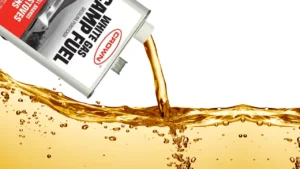If you have a Coleman dual fuel stove, you probably already know that Coleman gas isn’t the only fuel you can use with it. You can use gasoline with it and interestingly in a pinch you can even use white gas in your car.
White gas burns cleaner, is more expensive and more fuel efficient than gasoline when used in a Coleman stove or lantern. It has fewer active ingredients than gasoline and no alcohol.
Gasoline’s shelf life is only 3 to 6 months but unopened white gas can last for 7 or years more if unopened. Gasoline comes in more varieties and is more widely available than white gas.
White gas and gasoline can both power your Coleman stove or lantern but there are many differences between the two fuels.
White Gas and Gasoline: The Differences Explained
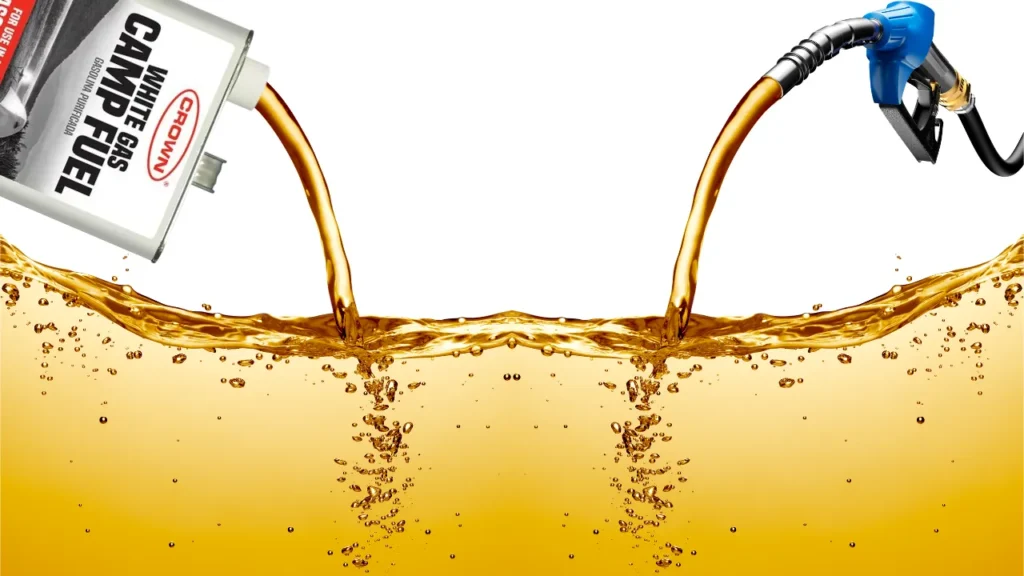
Here is a useful table showing the key differences between Coleman fuel and gasoline:
| White Gas/Coleman Fuel | Unleaded Gas | |
|---|---|---|
| Active Ingredients | Petroleum naphtha | Aromatic and aliphatic hydrocarbons Naphthalene Paraffin Alkene |
| Other Ingredients | US Coleman fuel contains extra additives and anti-corrosives. | Additives Ethanol Octanes (depends on fuel grade) |
| Fuel Efficiency with Camping Stoves | Excellent | Good |
| Price | Relatively inexpensive | Very inexpensive |
| Alcohol, Additives and Octane Level | No alcohol or additives Very low octane level | Contains additives and 10% ethanol (for E10) Octane level depends on variety |
| Availability | Wide (if you also consider generic white gas) | Extremely widely available |
| Shelf Life | 6 months once opened 7 years if unopened | 3 to 6 months |
Ingredients
White gas and gasoline are both fuels but differ in their active ingredients.
White gas’s only active ingredient is petroleum naphtha and if you buy US Coleman fuel it will also have stabilizers and anti-corrosives to protect your stove.
In contrast, gasoline has several active ingredients:
- Hydrocarbons
- Naphthalene
- Parrafin
- Alkene
- Octanes (level depends on the variant)
Gasoline also contains additives and ethanol, while white gas doesn’t have these.
Varieties
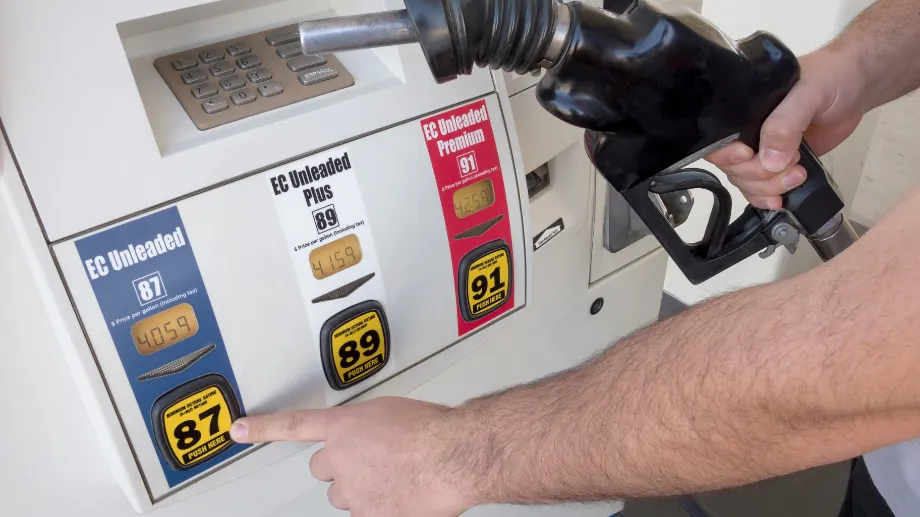
White gas is the generic form of Coleman fuel and both share the same active ingredients and are practically identical.
However, if you compare their prices, Coleman fuel is more expensive than generic white gas.
Gasoline comes in a far wider range of varieties:
- Leaded gasoline (no longer available due to the poisonous effects of lead – lead replacement fuels used instead)
- Unleaded gasoline
- 92 Octane or premium gasoline
- 93 Octane gasoline
- 95 Octane gasoline
- 89 Octane gasoline (this gasoline is considered mid-grade gasoline but isn’t as high-performing as lower octane gasoline)
- 87 Octane gasoline (87 refers to the octane level and this type currently has the lowest octane level)
- E10-E15 gasoline (typically has an octane level of 88 and contains 10-15% ethanol respectively)
- Flex fuel or E85 gasoline (contains additives and ethanol, making it great for cold weather)
Price
The gasoline price changes frequently but it’s always cheaper than buying white gas.
For example, in June 2023, the average AAA gasoline price was $3.57 per gallon.
Compare this to a 1 gallon bottle of Coleman fuel that costs around $14 or 1 gallon of white gas that costs around $8.
Crown White Gas Camp Fuel is specially blended for outdoor use of portable gasoline camping applications including gas stoves and lanterns. Manufactured with an added rust inhibitor for rust and corrosion protection. Crown White Gas Camp Fuel is carefully checked to maintain the highest level of quality for a cleaner burn and longer life.
This makes white gas much more expensive than gasoline.
Availability
Gasoline is much more widely available than Coleman fuel or white gas because you can buy it from any gas station.
White gas is generally only sold in outdoor stores, online or in big box stores and you may sometimes struggle to find the variety that you like.
Efficacy with Coleman Stoves and Lanterns
White gas is more efficient than gasoline in Coleman stoves and lanterns and you’ll need less of it than gasoline.
The YouTube video below proves this and shows that you only need 15ml of white gas to boil a pot of water opposed to 22ml of gasoline.
White gas took 4 minutes and 12 seconds to boil the water while gasoline took 6 minutes and 26 seconds:
Time To Boil 1 Liter (32 oz) of Water
| Fuel Type | Time To Boil 1 L (32 oz) of Water | Total Fuel Used |
|---|---|---|
| Rubbing Alcohol 97% | 10:13 | 41 mL |
| Low Octane Gasoline | 6:26 | 22 mL |
| Kerosene | 4:28 | 18 mL |
| Coleman Premium Blent Fuel (White Gas) | 4:12 | 15 mL |
Shelf Life
I know of campers who have used 20-year-old white gas they had in their garage without any issues, even though the official shelf life is between 5 and 7 years.
In fact, the person in the video below used 45-year-old white gas and it still burned:
As long as you keep the bottle sealed and in a dark place, white gas should last for at least a decade as it takes ages for it to go bad. However, once opened air exposure will make it degrade and go bad within 6 months.
Gasoline has a much shorter shelf life and you should use it within 3 to 6 months and before it becomes sludge-like and degrades.
How Does Gasoline Compare To White Gas In a Camping Stove?
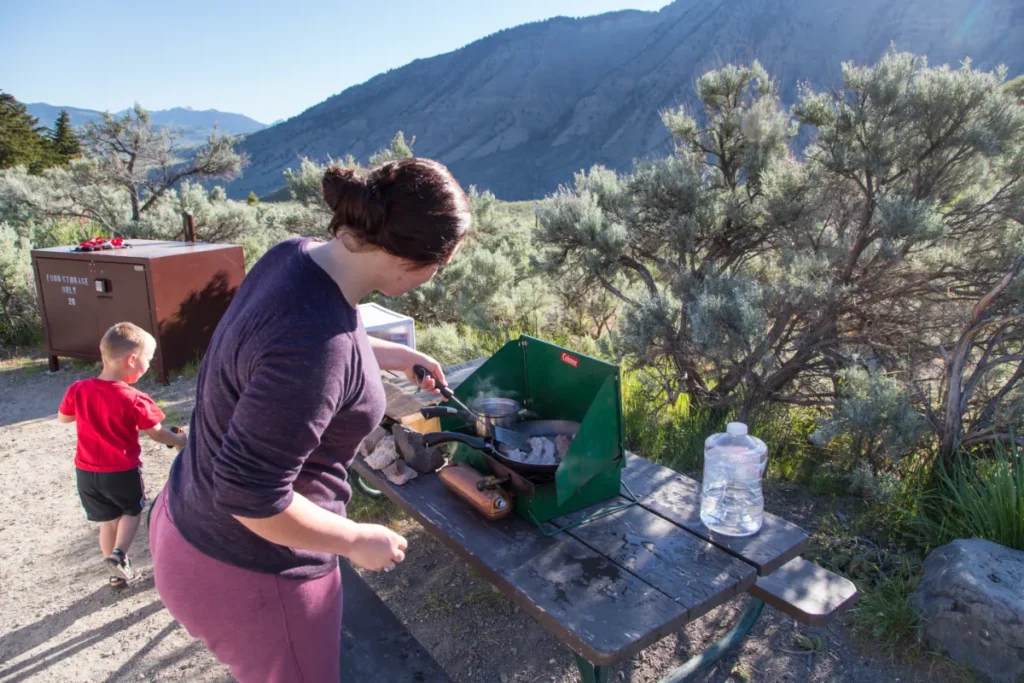
White gas or Coleman fuel works much more effectively than gasoline, whether leaded or unleaded and regardless of the octane level.
Coleman fuel is designed to work with Coleman stoves and lanterns and is recommended over other fuel types by the manufacturer because it’s more fuel efficient, burns cleaner and leaves very little sooty residue that can clog the fuel lines and generator.
How To Use Gasoline in a Coleman Stove
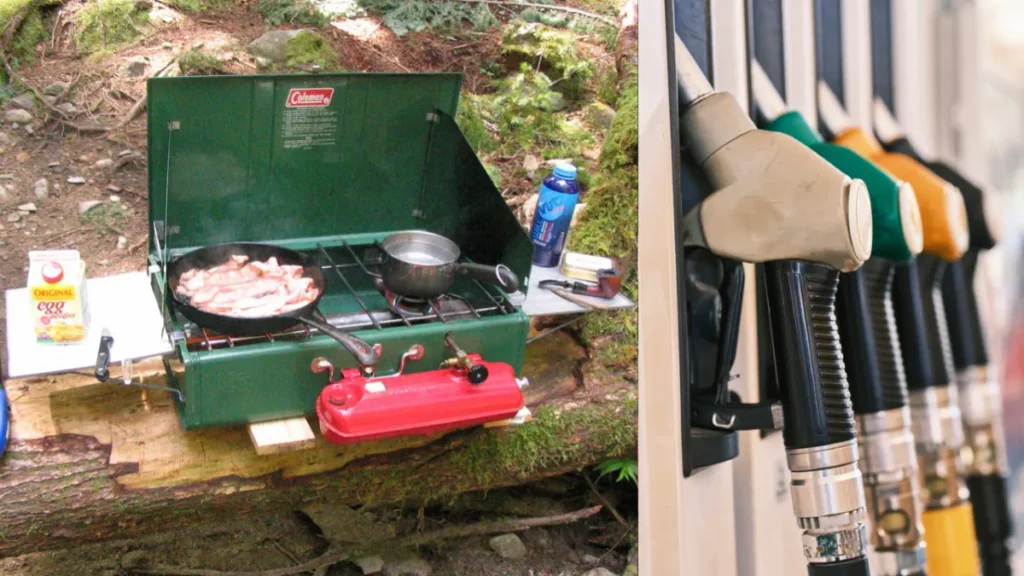
I camp a lot and I’ve been in situations where I’ve run out of Coleman fuel. When this happened, I siphoned a bit of gasoline from my car and used that to power my camping stove and lanterns.
Here’s how to use gasoline in a Coleman stove:
1. Get some low-octane unleaded gasoline. You can use higher octane gas but low-octane has fewer additives which will clog your stove’s fuel line and generator and make cleaning up a nightmare.
2. Pour the gasoline in the fuel reservoir. If you have leftover white gas in the reservoir, you can leave it there because the gasoline will work fine when mixed.
3. Operate the stove in a well-ventilated space. Gasoline doesn’t burn as cleanly as white gas and will produce smoke and carbon monoxide, which can be deadly in a poorly ventilated area.
4. Drain the reservoir after use. Unlike white gas, you shouldn’t leave gasoline in the stove’s fuel reservoir because it will form thick residue. It’s also a good idea to clean the fuel lines and generator with some carburetor fluid.
If you’re worried about the mess and sooty residue using gasoline will leave, you could always make an easy DIY gasoline stove.





